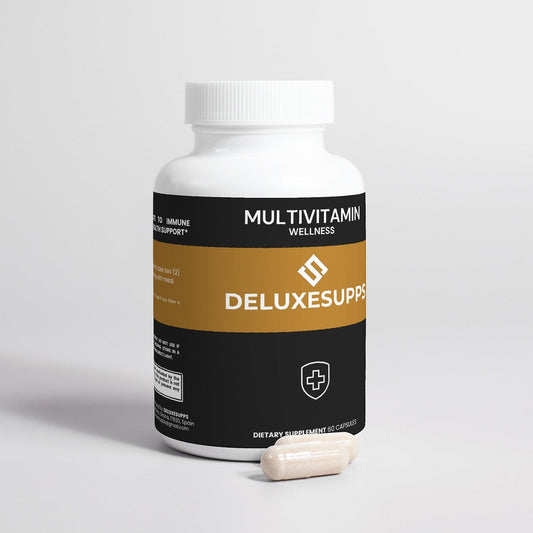Updated on: 2025-11-21
- Introduction to adjustable dumbbells for home gym performance
- Pros and cons of adjustable dumbbells for home gym
- Step-by-step guide to choosing and using adjustable dumbbells for home gym
- Wrap-up: making adjustable dumbbells for home gym a smart investment
- Q&A: adjustable dumbbells for home gym
- About the author: Deluxesupps Deluxesupps
Introduction to adjustable dumbbells for home gym performance
Adjustable dumbbells for home gym users combine versatility, small-space convenience, and cost control into one compact system. Whether you lift in a studio apartment, a garage, or a dedicated room, an adjustable dumbbell set for home gym strength training can replace an entire rack of fixed weights. You gain rapid weight changes for supersets, progressive overload for muscle and strength development, and an uncluttered floor plan that keeps home workouts efficient and organized. This article outlines benefits, practical trade-offs, and a clear plan to select and use home gym adjustable dumbbells with confidence.
Compared with buying multiple pairs of fixed dumbbells for home gym training, a quality set of adjustable dumbbells reduces total cost and storage needs while still supporting major movement patterns. You can row, press, hinge, squat, and lunge with one system, then increase weight in small increments to keep progressing. The result is more training done in less time, with fewer equipment purchases and less space taken up by heavy steel.
Pros and cons of adjustable dumbbells for home gym
- Space efficiency: Adjustable dumbbells condense a full range of weights into a small footprint, which suits apartments and compact training corners.
- Cost efficiency: Purchasing one system is typically more economical than collecting many fixed pairs across common weight ranges.
- Training versatility: Presses, rows, squats, hinges, lunges, carries, and isolation exercises are all supported, enabling balanced programming.
- Fast weight changes: Dial, pin, or plate systems allow quick loading changes for circuits and supersets.
- Increment control: Micro-adjust plates or add-on chips help fine-tune progression when a full weight jump is too large.
- Maximum load limits: Some adjustable dumbbells cap at lower loads than commercial fixed sets. Heavy lifters may outgrow entry-level units.
- Durability considerations: Certain mechanisms are not designed for drops. Handle with care and follow manufacturer guidance.
- Handle shape and width: Some designs have thicker handles or wider heads, which can affect wrist comfort and exercise range of motion.
- Change-speed trade-offs: Plate-loaded systems cost less but change slower than dial-based designs.
Bottom line: adjustable dumbbells for home gym training are an excellent fit for most users seeking a compact, flexible solution. Choose a weight range and mechanism that align with goals, technique, and available space.
Step-by-step guide to choosing and using adjustable dumbbells for home gym
Define training goals and weight range
Clarify your primary goal: general fitness, muscle gain, strength development, or conditioning. Then match the load range. For full-body training, many users benefit from a set that covers light warm-up weights up to a challenging top-end for compound lifts. If you plan to progress significantly on rows, goblet squats, or presses, prioritize a higher maximum weight. If you mainly perform accessory work or lighter circuits, a moderate cap will suffice and keep costs down.
- General fitness: prioritize a balanced range with fine increments for gradual progression.
- Muscle and strength focus: seek higher top-end loads and consider add-on plates or expansion kits.
- Conditioning circuits: emphasize fast change mechanisms and durable cradles for frequent transitions.
Choose a loading mechanism and handle design
Common systems include dial-based, pin-and-plate, and traditional plate-loaded designs. Dial systems deliver the fastest changes and are convenient for supersets. Pin-and-plate options are also quick and often allow solid increment control. Traditional plate-loaded adjustable dumbbells are usually the most affordable adjustable dumbbells for small home gym setups but require patience when swapping plates.
Assess handle texture, diameter, and shape. A secure knurl pattern is useful for sweaty sessions, while a moderate diameter supports grip comfort during longer sets. Check head width and profile to ensure comfortable overhead pressing and a natural path on rows and curls.
Check footprint, rack, and storage
Measure your training area. Confirm the cradles or stands fit your floor plan and leave room for hinges, lunges, and presses without obstructions. Some users prefer a waist-height stand to reduce bending and maintain neutral posture when re-racking. If you need an ultra-compact corner, choose a cradle that nests cleanly and keeps walkways clear.
If you want to round out a minimal home setup, a mat, a flat bench, and a small shelf for accessories can complete a low-clutter environment. For a curated selection of training essentials and wellness staples, you can browse All Products.
Set up a safe training zone
Before your first session, establish clear floor space and a stable surface. Avoid obstacles near the dumbbell path. When lifting near the upper end of your range, confirm collars or locking mechanisms are fully engaged before each set. Practice controlled re-racking into the cradle or back onto the floor. If your model is not drop-rated, avoid releasing weights from height and set them down under control.
Plan progression and programming
Progress gradually with simple structure. For example, increase repetitions before adding load, or add small increments to maintain form quality. Pair compound lifts with accessory work to strengthen supporting musculature. Use short circuits or supersets when time is limited, and employ steady rest intervals to keep technique consistent. When training multiple days per week, alternate focus areas to balance recovery and effort.
For readers seeking a basic routine, consider two to four sessions each week featuring a push movement, a pull movement, a squat or lunge, and a hinge. Add core work and carries to finish. Keep records of weights and reps to guide the next increase. If you enjoy educational reading alongside training, the articles in Mindset offer useful perspectives on consistency and habit-building.
Maintain and care for your adjustable dumbbells
Wipe handles and plates after training to maintain grip and appearance. Periodically check bolts, locking mechanisms, and cradles for proper function. Store the set away from moisture and out of direct sunlight. If your system uses add-on micro-plates, keep them together to avoid mismatches between sides. A clear care routine increases lifespan and supports reliable performance across many training cycles.
Wrap-up: making adjustable dumbbells for home gym a smart investment
When space and budget matter, adjustable dumbbells for home gym training deliver exceptional value. You gain a broad exercise menu, quick weight changes, and a tidy setup. Select a system by aligning weight range, mechanism speed, handle design, and durability with your goals. Build a progression plan that favors small, steady increases, and maintain the equipment so it performs consistently. With this approach, home gym adjustable dumbbells can serve as your primary strength tool for total-body training.
If you prefer to support your routine with simple daily essentials, you may explore options like a broad-spectrum daily formula here: Complete Multivitamin. Some athletes also like to keep routines well-rounded with traditional herbal support; a popular choice is Ashwagandha. Choose products that align with your preferences and training schedule.
To see the full range of wellness products and training-friendly supplements in one place, visit the All Products page. For additional training and mindset insights, the updated articles in Suppspedia are a helpful resource.
Q&A: adjustable dumbbells for home gym
What are the benefits of using adjustable dumbbells in a home gym?
The main benefits include space savings, cost efficiency, and training flexibility. A single system covers warm-up loads and challenging top-end weights without filling a room with multiple fixed pairs. You can change weights quickly to support circuits, supersets, or progressive overload. The compact footprint keeps your training area tidy and functional.
How do adjustable dumbbells compare to fixed dumbbells for home workouts?
Fixed dumbbells are durable and ready to use with no mechanism changes, but they require substantial space and a higher total cost when you need a full range. Home gym adjustable dumbbells deliver similar training outcomes for most exercises while using far less space and fewer resources. The main trade-offs involve top-end load limits, handle geometry, and the need to engage a locking mechanism before lifting.
Which weight range suits most home trainees?
For balanced, full-body training, many home users benefit from a range that starts light for warm-ups and supports challenging loads for compound lifts. If you focus on general fitness and accessory work, a moderate range is sufficient. If you aim to push heavy rows, presses, squats, or hinges, consider a higher top-end and increments that let you progress without big jumps.
What should I look for in a safe setup with adjustable dumbbells?
Confirm that the lifting area is clear, the floor is stable, and your cradle or stand is sturdy. Check the locking mechanism or plates before each set. Re-rack under control and avoid dropping if your model is not designed for it. Consistent inspection and simple care routines help ensure reliable performance.
About the author: Deluxesupps Deluxesupps
Deluxesupps Deluxesupps
Deluxesupps Deluxesupps writes about practical training equipment, compact home gym setups, and sustainable routines that fit busy schedules. With experience in strength training and content strategy, the goal is to deliver clear, objective guidance you can apply today. Thank you for reading and training with intention.
The content in this blog post is intended for general information purposes only. It should not be considered as professional, medical, or legal advice. For specific guidance related to your situation, please consult a qualified professional. The store does not assume responsibility for any decisions made based on this information.












